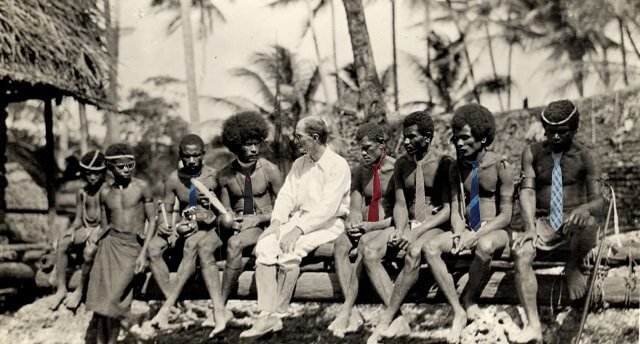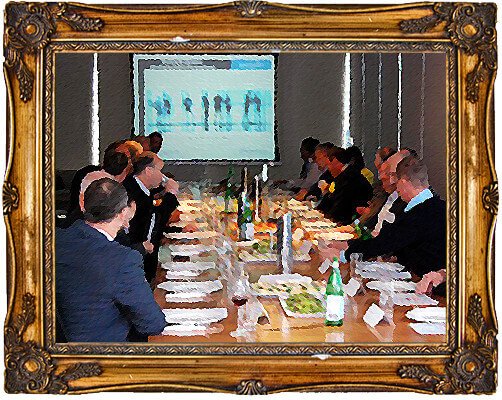Deadlines and Cycles

BEING PRODUCTIVE
One of the most universally experienced realities for professionals working within business contexts is the strict organization of every activity according to predetermined units of time. In the context of competitive markets and profit-driven motives, tracking progress and striving for efficiency makes sense as an imperative of all businesses. In order to achieve their goals, the productive outputs of activities and decisions within business are monitored on a recurring basis through temporal constructs such as fiscal quarters and production cycles. Practitioners, students, and early career professionals looking to work in business must therefore come to accept that the time constraints imposed on them are consistent and rational business objectives that they need to come to terms with and adapt their practices to when working in and for business.
Many practicing anthropologists argue that because the value of ethnographic investigation lies in its theoretically-grounded frames of analysis, their work does not necessarily require long spans of time. However, for researchers that may have experienced their relationship with time along completely different standards, “understanding the organization of time in a new business setting is one of the first requirements for being productive” (Jordan 2013:16).
At the same time, “the limits to what is understood by working within these time frames must also be considered, and with it, the potential limits to its value in broadening understanding of the subjects and practices under examination” (Cefkin 2013:117). One path put forward is to determine the short-term goals of the project and narrow the focus of the analysis to only what is immediately useful instead of seeking to gain a deeper or broader understanding of the subject area. It is along these lines that Cefkin describes strategies for conducting rapid ethnography as holding the promise of “Cliffs Notes, providing informed but quick access to the important parts,” but Cefkin also points out that this approach begs the question, “how do ethnographers know which are the important parts?” (Cefkin 2013:110).
In the push to narrow the focus of the research to produce immediate results, this approach runs the risk of falling into the same trap as de-skilled ethnographic processes. In her chapter contribution, “The Value of Rapid Ethnography,” Ellen Isaacs concedes that “if you spend relatively short periods of time doing intensive observations and analysis, you cannot expect to gain a deep understanding of the many facets of a complex activity, you cannot be sure your findings are representative of a broader market, and you might base conclusions on a distorted picture of the activity you’re observing” (2013:106). The greatest insights may only emerge in a more granular and multifaceted analysis and remain hidden in a narrow research focus around a priori assumptions of what parts of a complex subject are significant and worthwhile to study.
As a way to remain grounded in rigorous research processes that practitioners are trained in, Elizabeth Churchill, director of UX at Google, proposes that researchers working within tight project deadlines and fast paced environments be perceptive of the bigger issues of the research studies that they are conducting (Cianflone 2017). That includes understanding how the limitations of the study may have impacted or influenced the research findings and including those as caveats in reports to business, as well as to use those same limited research findings to raise further questions as leads to potential future research.
Within the business community, a practitioner’s ability to work within the standardized time constraints common across all business domains is a signifier of that practitioner’s experience and expertise – or lack thereof. It is in this way that Isaacs observation that “rapid ethnography brings the ethnographic perspective into organizations in a way that is culturally palatable and gives ethnographers a seat at the table,” carries its weight (2013:92). Having to conduct research within the same time constraints expected from every other professional working in business contexts is the essential quality required to gain entreé into the business community as a research practitioner. However, it is clear that there is a tradeoff that occurs in this arrangement that must be acknowledged and accepted by both parties, and possibly negotiated when conditions allow or competitive ambitions to more fully understand promising horizons emerge.
Works Cited
Cefkin, Melissa. 2013. “The Limits to Speed in Ethnography.” In Advancing Ethnography in Corporate Environments, edited by B. Jordan, 108-121. Walnut Creek, CA: Left Coast Press.
Cianflone, Aryel (Producer). 2017. “Class v. Office: Balancing The Study and The Practice – Elizabeth Churchill, Google.” Mixed Methods Podcast. https://www.mixed-methods.org/episodes/2017/3/23/class-v-office-balancing-the-study-the-practice (accessed May 16, 2017).
Isaacs, Ellen. 2013. “The Value of Rapid Ethnography.” In Advancing Ethnography in Corporate Environments, edited by B. Jordan, 92-107. Walnut Creek, CA: Left Coast Press.
Jordan, Brigitte. 2013. “Introduction: Advancing Ethnography in Corporate Settings: Challenges and Emerging Opportunities.” In Advancing Ethnography in Corporate Environments, edited by B. Jordan, 7-22. Walnut Creek, CA: Left Coast Press.
Recommend0 recommendationsPublished in Business Anthropology, Career Resources




Responses